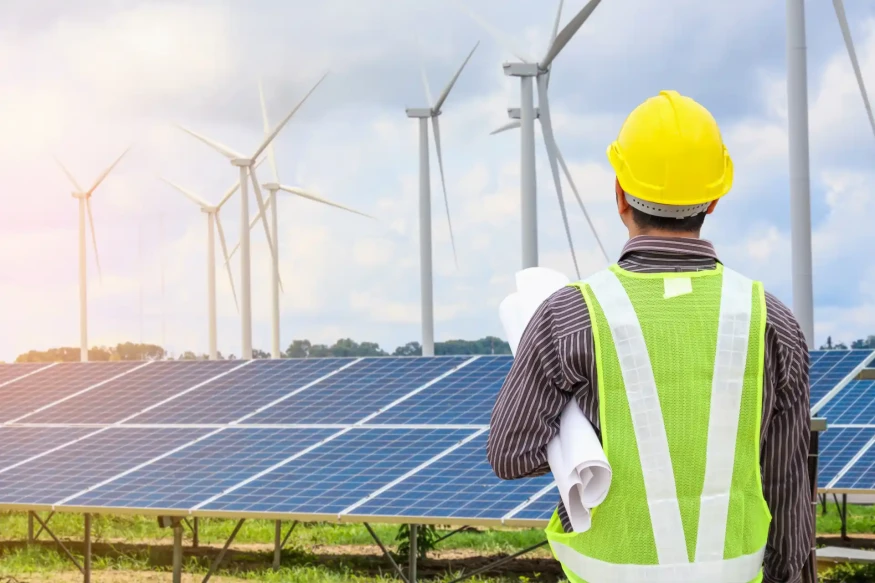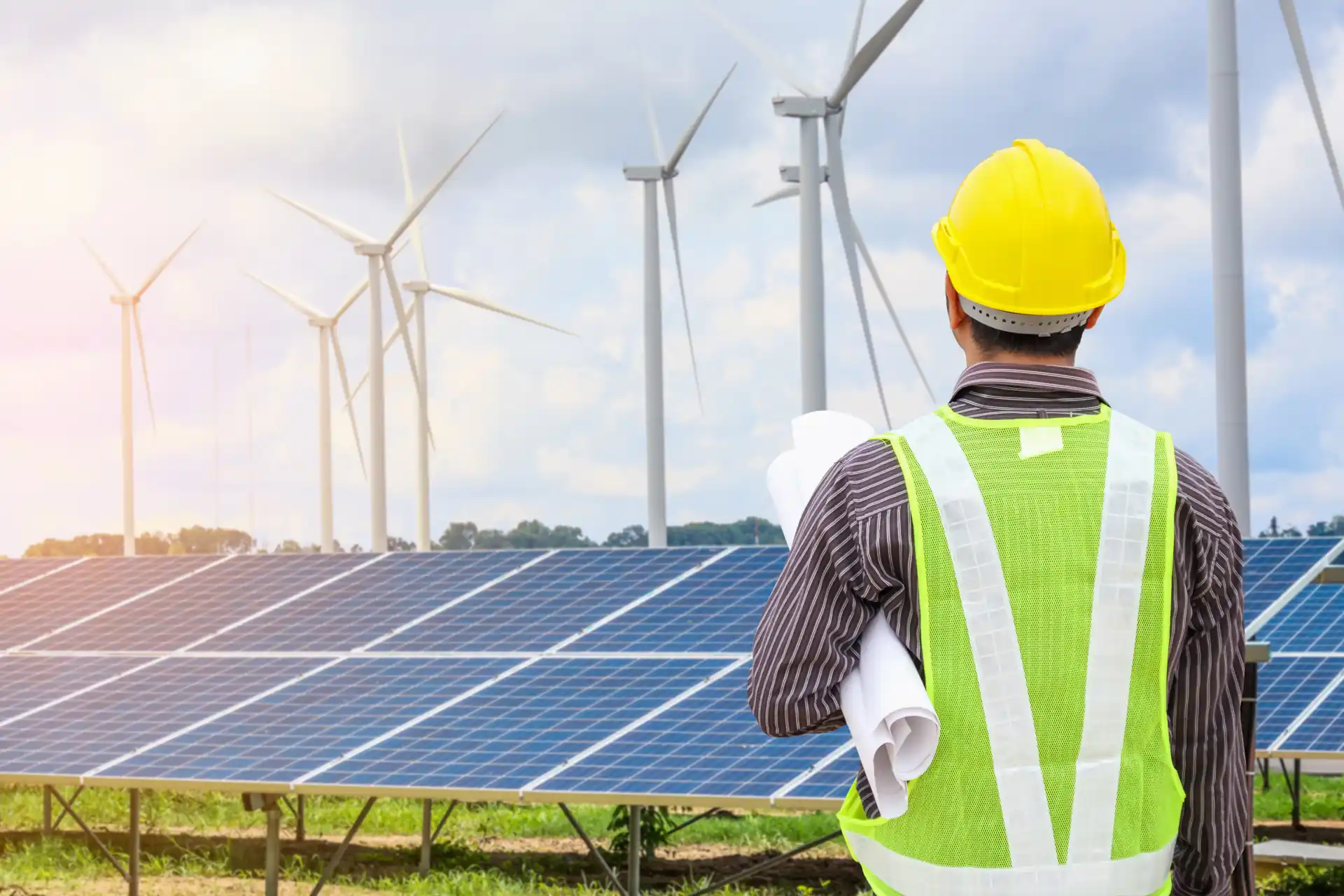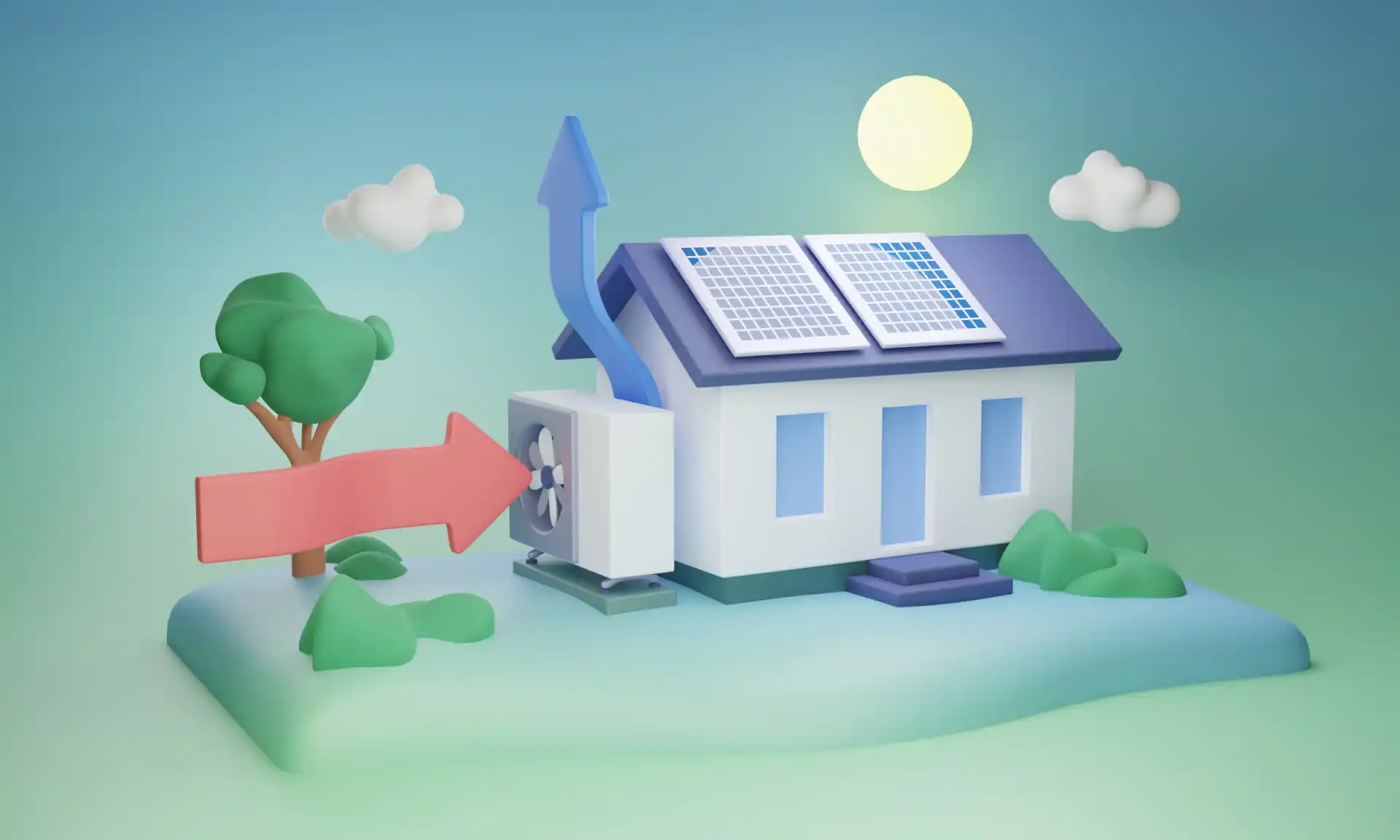Posted on April 25, 2024

Google bought more than 1.5 gigawatts of clean energy capacity in North America and Europe over the past 12 months using new standardised contracts that closed deals in as little as 2 months. The streamlined approach marks a significant change from the previously lengthy negotiation process that could take up to a year.
The search and cloud company is aiming to scale the amount of ‘carbon-free’ energy currently supplying its data centres. The new approach has already been effective in expediting the purchase of renewable energy for the company’s data centres.
Google said that it managed to acquire the 1.5 gigawatts of renewable energy through a new Power Purchase Agreement procurement process developed in partnership with LevelTen Energy, which has now been released via the energy broker.
Back in March 2023, Google reported that it had developed a new Request for Proposal (RFP) system in partnership with LevelTen Energy to reduce the time required to sign a Power Purchase Agreement (PPA).
The framework developed by Google and LevelTen is known as the LevelTen Energy Accelerated Process (LEAP) and is now available to other companies. . LevelTen said LEAP has reduced the timeline of a traditional RFP and PPA negotiation process from the typical 12 months or longer down to about 100 days.
The first transaction using the new model was a contract with Cubico Sustainable Investments for 100 megawatts of solar power to support the 24-hour seven-days-a-week carbon-free energy goal at its data centre in Council Bluffs, Iowa. The final agreement was made within weeks, instead of months.
Google said:
“Leaning on our risk-balanced PPA template, developed with feedback from LevelTen and the market, we quickly agreed on common contract provisions with Cubico. LevelTen’s click-through UI helped us finalize project-specific terms, and we landed a final agreement within weeks, instead of months.”
The innovative process considerably shortens the usual steps taken with executing PPAs, a type of contract for procuring electricity generated by solar or wind farms. The process involves standardised contracts using a template that addresses the risks associated with this kind of deal between the buyer and the seller. Issues can range from performance criteria to price fluctuation for supplies to grid interconnection delays. By making terms and expectations clear upfront negotiation time has been greatly reduced allowing for faster deal closures.
COMPARE PRICES FROM LOCAL INSTALLERS
Compare prices from local companies fast & free
Enter your postcode to compare quotes from leading professionals. We promise to keep your information Safe & Secure. Privacy Policy
Traditionally, renewable energy procurement involved a protracted negotiation process to reach a compromise between buyers and sellers. The new contract model disposes of much of the back-and-forth, making the process more efficient and effective. By standardising contracts for wind and solar PPAs Google has set a new standard for expediency in the clean energy sector.
Amanda Peterson Corio, global head of data center energy at Google said:
"This new way of doing business has become our standard for wind and solar PPAs, and we’re exploring ways to contract for additional types of carbon-free energy generation and storage. LEAP is helping advance our 2030 company-wide goal to run all our data centers on carbon-free energy, every hour of every day. We shared a vision with LevelTen to develop a smarter, more efficient way of doing business in the clean energy industry, and the result has been just that. The approach has already proven a success in both domestic and international markets, and we look forward to expanding the scope soon.”
Although the contracts so far have specifically covered North America and Europe Google is exploring the potential for other geographies.
Companies use PPAs to buy enough renewable energy to match their actual energy consumption. Quite often the contracts cover projects that are located a long way from a company’s actual facilities but businesses can apply the renewable energy certificates associated with these projects to claim emission reductions. Each renewable energy certificate represents the addition of 1 megawatt-hour from a source such as solar or wind farms to the grid.
Google signed more than 80 agreements for 10 gigawatts of power, the generating capacity of 31 million solar panels, between 2010 and 2022. Since then Google’s new approach has already demonstrated its effectiveness with deals closing in the fastest time, laying the ground for more opportunities in the future. By collaborating with renewable energy developers and brokers, Google scaled its clean energy initiatives very quickly. Not only does this process accelerate deal closures but it also frees up resources for other critical projects.
In 2023, Google used the new contract model to negotiate a deal for four solar plants under development in the Netherlands by Kronos Solar EDPR. The energy will directly support the search giant’s data centre in Eernshaven making it possible for Google to operate the facility using carbon-free energy 24 hours a day. Google said that within days of closing the RFP, the company quickly moved to project selection, and had a signature-ready PPA within two weeks. In all, there was only a period of 82 days between RFP launch and contract execution.
Amanda Peterson Corio said:
"In the world of clean energy, that’s fast, warp-factor-10 fast."
Over the past year, LevelTen and Google have issued and completed multiple LEAP procurements in both North America and Europe.
LevelTen said:
“We’ve closed PPAs via LEAP with multinational and small developers, and with owner-operators, including in one of the hardest non-liquid markets: the Netherlands. Going forward, Google plans to transact via LEAP at scale, particularly in wholesale markets where it is relatively easy to structure conventional PPAs.”
Apart from the speed of negotiations, Google's new contract structure offers several other advantages for both the company and its partners. By securing project costs quickly and efficiently, developers can lessen uncertainties and delays, which provides more clarity for buyers. The new contract system frees up resources on its “relatively small” energy team allowing a greater number of deals to be done and the time to focus on other difficult challenges such as interconnection backlogs that have been delaying many U.S. renewable projects. This streamlined and simplified approach also aligns with Google’s long-term goal of operating on carbon-free energy grids by 2030.
Rob Collier, LevelTen Energy’s SVP of Transactions said:
“In this industry, we know that time kills deals. Renewable energy transactions need to scale quickly, we can't wait any longer. There's no reason PPAs need to take a year to get done."
So far, 2024 has seen Google sign Power Purchase Agreements with the Netherlands, Belgium, Italy, Poland, and Arizona. The company has also announced investments into carbon capture and put out an RFP for innovative energy generation technologies. Google is moving to 24/7 PPAs across the board as this ensures that any clean energy paid for is matched by metered electricity used by a large consumer.
Google continues to set the pace for the industry with its commitment to clean energy and sustainability. The company is leading the way by setting new standards for expediency and efficiency in clean energy deals which show the possibilities for rapid transformation in the renewable energy sector. Google’s forward-thinking approach is beneficial for not just them but also for advancing clean energy enterprises globally.
Find a local installer
Welcome to the biggest directory of UK renewable energy companies
Posted on April 25, 2024

When it comes to making our homes more sustainable, we often focus intently on the interior – upgrading appliances, improving insulation, and choosing eco-friendly décor. However, the exterior areas of a home are frequently overlooked in sustainability efforts. This is a missed opportunity. Embracing green practices in all aspects of home ownership can have a significant positive impact on the environment.
Here, we’ll explore the reasons why exterior spaces are often neglected in sustainability discussions, and provide actionable tips for creating a greener, more environmentally friendly property – inside and out.
COMPARE PRICES FROM LOCAL INSTALLERS
Compare prices from local companies fast & free
Enter your postcode to compare quotes from leading professionals. We promise to keep your information Safe & Secure. Privacy Policy
Why exterior spaces are overlooked
There are a few key reasons for the oversight when it comes to sustainable homes. First, the main emphasis tends to be on optimising energy efficiency and aesthetics within the home itself. Homeowners are naturally drawn to upgrading appliances, improving insulation, and choosing sustainable interior design elements, but the outdoor areas of the property can sometimes take a backseat in these considerations.
Additionally, there is often a lack of awareness about the various sustainability options available for the exterior of the home. Many homeowners may simply not realise the breadth of eco-friendly upgrades that can be made, such as installing insulated garage doors, for example, or implementing water conservation measures. From renewable energy sources to water-wise landscaping, the possibilities for greening the exterior are vast, but not always top-of-mind.
Finally, there’s a perception that upgrading the sustainability of exterior areas requires significant extra cost or effort compared to interior projects. While some eco-friendly enhancements do require an initial investment, there are also many budget-friendly, easy-to-implement solutions. Overcoming this mental barrier is an important step in embracing a whole-home approach to sustainability.
Benefits of greening the garage
Embracing sustainability in the garage offers a multitude of benefits that extend well beyond just environmental considerations. Perhaps the most obvious advantage is being able to reduce your carbon footprint. By incorporating renewable energy sources, water conservation systems and other green features into the garage, homeowners can dramatically decrease their carbon emissions and resource consumption. This not only benefits the planet, but also aligns with a growing societal emphasis on sustainable living.
In addition to the environmental upsides, greening the garage can also increase a home's value and kerb appeal. Prospective buyers are increasingly seeking out properties with demonstrated eco-consciousness, making sustainability-focused upgrades a wise investment. Furthermore, an attractive, well-maintained garage can enhance the overall aesthetic appeal of a home, further boosting its market value.
Beyond financial considerations, a greener garage also contributes to a healthier, more enjoyable outdoor living space. Features like eco-friendly landscaping, efficient lighting and improved insulation can create a more comfortable, inviting environment for activities, hobbies, and quality time spent in the garage. No matter what you use your garage for, optimising it for warmth and comfort will reduce utility costs and keep this space more functional.
The benefits of greening the garage are multifaceted, encompassing environmental, financial, and practical advantages. For homeowners seeking to adopt a more holistic approach to sustainable living, the garage presents a prime opportunity to make a meaningful difference.
Garage sustainability strategies
When it comes to transforming the garage into a more eco-friendly space, there are several key strategies homeowners can implement.
Add an EV charger
One popular option to make a garage eco-friendly is to install an electric vehicle (EV) charging station. As the adoption of electric vehicles continues to rise, having a dedicated charging point in the garage can not only help to reduce carbon emissions, but also increase a home's appeal to environmentally conscious buyers should you sell up in the future.
Utilise roof space for renewables
Another impactful sustainability upgrade for the garage is the installation of solar panels. By harnessing the power of renewable energy, homeowners can offset their reliance on the grid and drastically lower their energy costs, plus it makes great use of valuable roof space if your garage is an extension to your property. Solar panels can be seamlessly integrated into the garage roofing or mounted on the exterior walls, providing a clean, efficient source of power.
Conserve water
Property owners can also explore a rainwater harvesting system for their garage to utilise the water run-off from guttering. By capturing and storing rainwater, this system can supply water for tasks like car washing, gardening, and other outdoor chores, so you don’t need to waste tap water. Not only does this reduce the demand for municipal water supplies, but it also saves homeowners money on their utility bills.
Insulate connecting walls
Many garages are connected to the main house, which means they’re a prime opportunity for heat loss. Insulating the garage, including the door and sealing draught spots such as around windows, can help to keep heat in and prevent the need for external heat sources in the winter, or fans in the summer.
Implement surrounding landscaping
When it comes to the physical structure of the garage, eco-friendly landscaping, and building materials can make a significant difference. Native, drought-tolerant plants, permeable paving, and recycled or sustainable construction materials all contribute to a greener, more environmentally responsible garage.
Minimise waste with recycling
Finally, homeowners should consider implementing robust waste reduction and recycling initiatives within the garage. This might include dedicated sorting stations, composting systems, and the use of reusable storage containers. Garages are often areas of the home where we accumulate rubbish and waste materials we no longer need or don’t know what to do with. But minimising the amount of waste generated in this space, and sorting it appropriately so it can be recycled in the future, can help you to maintain your commitment to sustainability.
Each of these garage sustainability strategies offers unique benefits and can be tailored to the specific needs and preferences of the homeowner. By combining multiple approaches, homeowners can transform their garages into shining examples of eco-consciousness.
As homeowners continue to prioritise sustainability and eco-friendly living, it's essential that they look beyond the interior of the home and consider the impact of their exterior spaces as well. The garage, in particular, presents a prime opportunity for homeowners to embrace green practices and reduce their overall environmental footprint.
By acknowledging the common reasons why exteriors are often overlooked in sustainability efforts, such as a focus on interior design and a lack of awareness about outdoor upgrades, homeowners can make a concerted effort to address this oversight. Recognising the multitude of benefits that come with greening the garage, from reduced environmental impact to increased home value, can serve as powerful motivation.
Find a local installer
Welcome to the biggest directory of UK renewable energy companies
Posted on April 14, 2024

Recent government data has revealed that UK greenhouse gas emissions (GHGs) have continued to fall with fossil fuels providing just a third of UK power last year. The UK is now halfway to net zero as emissions have been cut by 53% between1990 and 2023 or 50% if you include emissions from international aviation and shipping.
Provisional figures suggest the UK’s greenhouse gas emissions (GHGs) fell by 5.4% in 2023 after a drop in gas usage to heat homes and generate electricity. Reductions were seen in sectors such as electricity supply and residential areas indicating an increased reliance on renewable energy sources. The Department for Energy Security and Net Zero (DESNZ) said reliance on gas is decreasing as the UK shifts to renewable energy sources. The electricity supply sector reported a cut in emissions of 19.6%, followed by homes at 7.2%, and industry with an 8% fall. The latest statistics surpass the previous official 2022 data that saw the UK become the first major economy to halve its emissions.
COMPARE PRICES FROM LOCAL INSTALLERS
Compare prices from local companies fast & free
Enter your postcode to compare quotes from leading professionals. We promise to keep your information Safe & Secure. Privacy Policy
This is a remarkable and historic achievement. The UK has reduced emissions further and faster than any other major industrialised nation, while still managing to grow its economy by 80% since 1990. It is the first major economy to halve its territorial carbon emissions across several key sectors. DESNZ says the UK reduced territorial GHG emissions by 428 MtCO2e between 1990 and 2023 surpassing the combined emissions reductions from the US, Canada, France, Italy, and Japan during a similar time period.
Energy Security Secretary Claire Coutinho said:
“This latest drop in our emissions follows the UK’s achievement in becoming the first major economy to halve its polluting carbon emissions. We have done all this whilst growing our economy by 80% and shielding families from unnecessary costs.”
Total GHG emissions were estimated at 384.2 million tonnes of carbon dioxide equivalent in 2023. The electricity sector, which makes up about 11% of Britain’s GHG emissions, recorded the biggest drop at 41.1 MtCO2e, compared with 51.9 MtCO2e in 2022.
DESNZ said:
“This decrease in 2023 is primarily due to a reduction in gas demand from the electricity supply and buildings and product uses sectors.”
Another factor to take into account suggested by DESNZ is a rebound in French nuclear power output in 2023 which meant the UK was able to import more electricity, reducing the need for British fossil fuel power production alongside a drop in demand.
The UK is on the right path with the latest figures reflecting its ‘world-leading record’ on renewable electricity. It boasts the five largest operational offshore wind farm projects in the world and almost half of the electricity that is generated in the UK now comes from renewables, compared to just 7% in 2010. The UK has also significantly expanded its capacity of solar parks and bioenergy plants.
Right across Europe electric vehicles and heat pumps routinely account for between 10 and 20 percent of the market. These technologies are fast becoming mainstream as costs fall and demand grows.
Furthermore, advances in technology are providing ways of decarbonising everything from steel and aviation to proteins and shipping.
However, the UK still has a long way to go. Global emissions are still climbing, and the UK’s imported emissions remain persistently high. A large portion of the UK’s emissions reductions can be attributed to deindustrialisation and more recently flat-lining economic growth. Far more emissions could have been cut if it weren’t for the many policy missteps over the past twenty years and the continued subsidising of polluting industries.
It's important to note that much of the decarbonisation achieved in the power sector has been through energy efficiency improvements and the closing of coal power plants which cannot be repeated. Emissions from transport, buildings, heating, industry, and agriculture are still far too high. It’s not clear whether power sector emissions reductions can be sustained especially in the face of failing power auctions, delayed nuclear projects, and parts of the government that remain enamoured with the fossil gas industry.
It isn’t far-fetched to consider that if the UK has halved emissions in a little over 25 years it should be possible to eradicate the other half over the next 25 years in line with the UK’s climate commitments.
The latest government data also features some new stats demonstrating how renewable generation exceeded fossil fuel generation for the fourth time in 2023. Wind generation in particular has set a series of new records. Overall renewables accounted for over 47% of the power mix in 2023 while coal, gas, and oil together generated just 34.3% of the UK's electricity which was a record low. Due to the healthy pipeline of clean energy projects, this trend is not only likely to continue but also accelerate during this decade. If this pace is maintained the grid will be mostly clean by 2030 and entirely clean by 2035.
The UK has attracted £300 billion in low-carbon investment since 2010 and a further £100 billion is expected by 2030. This investment supports up to 480,000 UK jobs.
DESNZ said:
“Companies have announced plans for £24 billion of new low carbon investment since September alone, showing confidence in the UK to support its green transition.”
The UK has exceeded expectations against three consecutive carbon budgets and is one of very few major economies to have a legally binding emissions reduction target covering 2035. The 77% target goes beyond many other countries.
The recent government data shows that the UK is making continued, significant progress towards net zero. Though statistics from recent years remain affected by the unprecedented economic impacts of the COVID-19 pandemic, the long-term trend demonstrates that the UK is quickly reducing emissions and meeting and exceeding carbon targets.
Evidently, the UK is committed to reaching its climate targets with emissions having already been cut faster than any other major economy while continuing to secure more clean energy investment.
Find a local installer
Welcome to the biggest directory of UK renewable energy companies
Posted on April 03, 2024

The Spanish energy and utility giant, Iberdrola has announced ambitious plans to invest $44 billion to accelerate electrification and upgrade grids in various countries across the world. This pledge is a significant boost to its already diverse portfolio of renewable initiatives.
The announcement follows Iberdrola’s recent Power Purchase Agreement with tech giant Amazon which cemented its commitment to supplying 159MW of electricity from the East Anglia Three offshore wind farm, which is currently in development in the North Sea.
The primary focus of the company’s investment will be on enhancing grid infrastructure, expanding renewables capacity, and integrating storage technologies to guarantee a balanced energy supply. The best part of two-thirds of the investment will target distribution and one-third will target transmission.
As well as committing to invest $44 billion Iberdrola also plans to recruit 10,000 individuals by 2026 to expedite the electrification drive across its portfolio.
COMPARE PRICES FROM LOCAL INSTALLERS
Compare prices from local companies fast & free
Enter your postcode to compare quotes from leading professionals. We promise to keep your information Safe & Secure. Privacy Policy
A considerable portion of Iberdrola’s investment, over a third (35%), will flow into the US market, with almost a quarter earmarked for the UK and 15% destined for projects in Brazil and the Iberian Peninsula.
As the parent company of Scottish Power in the UK, Iberdrola is set to create 1,000 jobs in the UK through £12 billion investment in new wind, solar, and network projects.
According to a press statement from Iberdrola, electrification is now “unstoppable in all sectors” due to the rapid pace of decarbonisation of industrial processes and transport networks as the energy transition ramps up. Due to the speed of the transition, it is crucial that electricity network infrastructure can be located where it's needed in advance and strengthened to accommodate increasing capacity. The largest part of the investment (60%) will go to expanding and strengthening networks in the US, UK, Brazil, and Spain.
Ignacio Galan, Iberdrola’s Executive Chairman, said:
"The electrification of energy is unstoppable and will expand exponentially in the years ahead, supporting decarbonisation, boosting energy security, and reducing the volatility caused by fossil fuels. Our strategic pillars focus on networks, geographical diversification, and a balanced energy and customers mix. This plan will allow us to grow our asset base, grow our profitability, and strengthen our finances, as well as increasing dividends and driving jobs and skills and economic growth".
Ignacio Galan pointed out that customers have been driving this change for some time now. Once people move to electric power, they are not returning to fossil fuels. Those who make the change from petrol to electric vehicles do not move back and the same is true for customers who replace gas boilers with heat pumps.
The $44 billion investment includes the $2.5bn purchase of 18.4% of Avangrid announced earlier this month. Gross investment of €15.5 billion, including €5 billion contributed by partners in projects previously identified, will go to renewables projects. All projects subject to funding are already under construction.
Iberdrola has said that more than 50% of the renewables investment will go to developing offshore wind in the US, UK, France, and Germany. A total of €21.5 billion will go towards the expansion and strengthening of grid networks in the US, UK, Brazil, and Spain. A further €1.5 billion of investment will go to boosting global energy storage systems. The company aims to reach 120 million kilowatt hours of pumped storage capacity over the next 3 years, an increase of 20% which will give greater stability to renewable energy output.
“Our strategy will focus on delivering enhanced grid to support the security of supply, now 60% of our total investment, as well as a strong expansion of renewables capacity, driven by the substitution of fossil technologies and additional demand. We also recognise an increasing role of storage technologies to preserve the balance between supply and demand 24 hours a day.”
Not only will these strategic investments drive Iberdrola’s net profits to $5.6 billion and on to $5.8 billion by 2026 but they will set Iberdrola on a path toward achieving zero emissions from generation as soon as 2030 while creating 10,000 new roles globally in the industry by 2026 at the same time.
Iberdrola’s network expansion plan comes at a time when investment in grids is seen as a key constituent to enabling the achievement of global climate goals. According to a recent report by the International Energy Agency (IEA) 80 million kilometres of power lines will need to be added or replaced globally by 2040, which is roughly equal to the entire global grid today if we are to remain on track to achieve the Paris Agreement goal to limit temperature rise to 1.5 centigrade and keep up with the increasing deployment of new renewable energy capacity. This will lead to investment doubling to over $600 billion per year by 2030.
Back in 2022, Iberdrola outlined plans to take a more selective approach to renewable energy projects and this investment builds on that strategy. Italy’s Enel made a similar business decision last year.
Iberdrola is hoping to have an additional 3MW of offshore wind in operation by 2027 building up to 5GW by the end of the decade. It also has a target to increase solar and onshore wind capacity by 6GW by 2027. The company has said that it will have a total renewables pipeline of 100GW for future development by 2030.
If you take into consideration all the crucial factors of their investment plan you can see that Iberdrola’s $44 billion investment is certainly going to be a game changer in the renewable energy sector.
Find a local installer
Welcome to the biggest directory of UK renewable energy companies
Posted on March 17, 2024

In recent years heat pumps have been recognised as having an important part to play in decarbonising our homes. It is expected that 80% of homes will move to a heat pump in the future although the exact timings for this are not yet known. The remaining 20% of homes will most likely be connected to heat networks using a large heat pump or other sources of clean energy. These networks will be communal systems that heat entire blocks of flats, villages, and even towns.
A heat pump is an excellent way of using electricity to heat your home in an energy-efficient way. As heat pumps don’t produce heat by burning fossil fuels, they are a better choice for the environment than gas and oil boilers. A heat pump uses technology very much like that found in a refrigerator or an air conditioner. It extracts heat from a source such as the surrounding air (air source heat pump), geothermal energy (ground source heat pump) stored in the ground, or nearby sources of water (water source heat pump) or waste heat from a factory. The heat pump then amplifies and transfers the heat to where it is needed. Unlike an electric panel heater, for example, a heat pump has a compressor, which increases the amount of heat that can be generated from each unit of electricity. For a panel heater, that ratio is 1:1 but for most heat pumps such as the air source heat pump on the UK market today the ratio is likely to be 1:3 to 1:4 making it a very efficient substitute although many factors can affect this. Heat pumps are also easy to maintain and operate.
COMPARE PRICES FROM LOCAL INSTALLERS
Compare prices from local companies fast & free
Enter your postcode to compare quotes from leading professionals. We promise to keep your information Safe & Secure. Privacy Policy
There are, however, some disadvantages and factors to consider when installing a heat pump. As heat pumps require electricity to work you will probably see a small increase in your electricity usage unless you are replacing fuel types such as LPG when you will definitely save money. Currently, electricity is still more expensive per unit than gas. It’s worth contacting your energy supplier to see whether they have a heat pump electricity tariff which may be cheaper and more suitable for an electric-based heating system.
Unlike boilers which are high-temperature systems most heat pumps operate at a lower flow temperature which means that to ensure heat can be effectively transferred into the space within your home, sufficient heat emitter surface area is needed, and this is why correctly sizing the heat emitters is so important. It is not always possible to use your existing radiators with a low-temperature heat pump. It will very likely be necessary to replace them with larger radiators or an underfloor heating system.
The design and installation of a heat pump system needs more planning and preparation than traditional boiler systems. A detailed heat loss calculation should be carried out on your property to ensure it is well-insulated which is key for an effective low-temperature heat pump system. There also needs to be an assessment of the heat pump output required as well as the correct sizing of the selected heat emitters.
Though low-temperature heat pumps can comfortably heat most homes, high-temperature heat pumps can match gas and oil boiler temperatures without having to make any changes to your home.
To generate three or four units of heat for every unit of electricity consumed the temperature of the fluid running through a low-temperature heat pump needs to be lower than that delivered by a conventional boiler. Though most air-source heat pumps and ground-source heat pumps operate at a maximum flow temperature of 55degC to be efficient they are better suited to running at flow temperatures of around 35°C to 45°C. Gas, oil, and biomass boilers on the other hand produce water temperatures of 60degC centigrade to 80degC. The UK government has recently been campaigning to get all households to reduce the flow temperature on their boiler to 60degC to save energy and reduce bills. The higher temperature is the most significant difference between the different heating technologies and is the biggest barrier to overcome when trying to retrofit homes with a low-temperature heat pump system and replace a traditional boiler. The installation of low-temperature heat pumps may well necessitate the installation of new compatible radiators and new plumbing.
However, this is where high-temperature heat pumps come into play. They can heat your home to the same level of warmth and at the same speed as a gas boiler. A high-temperature heat pump can reach between 60degC and 80degC which enables you to heat your home quicker than regular heat pumps without needing to buy new radiators or insulation. High-temperature heat pumps use more superior refrigerants than low-temperature heat pumps to be able to achieve this.
Most high-temperature heat pumps use R290 or R32 which are better for your home and the climate. They also come with industry-leading weather compensation controls. According to a recent government report, on average, high-temperature heat pumps have to raise their flow temperature above 65degC less than 1% of the time due to these technological advances.
High-temperature heat pumps can provide domestic hot water at the same temperature as boilers at around 60degC to 80degC whereas regular low-temperature heat pumps supply water at 45degC to 55degC.
With improvements being made to the technology of regular heat pumps on an ongoing basis, an increasing number of models are reaching 60°C to 65°C. High-temperature heat pumps rarely have to reach these higher temperatures.
Due to this fact and their usually superior refrigerants, high-temperature heat pumps are now usually just as efficient as low-temperature heat pumps. They have been shown to be almost three times as efficient as a central heating boiler.
The Committee for Climate Change has identified high-temperature heat pumps as a viable option for many homes where low-temperature heat pumps are not practical. High-temperature heat pumps can use existing radiators with little or no adjustment.
Most UK homes are set up to run with a gas or oil boiler and high-temperature radiators. If an old-style non-condensing boiler is being used, temperatures from the boiler to the radiators are 70-80 degrees Celsius. For modern condensing boilers, heating temperatures should be lower for the boiler to run at its higher efficiency, although this seldom happens in practice. 60degC temperature should keep most homes warm in the coldest weather with much lower temperatures being needed the rest of the year.
Because low-temperature heat pump models are at their most efficient when the heating system temperatures run at 35-45degC, older houses will need much bigger radiators to give off enough heat as well as better insulation and potentially new windows and doors to ensure they are kept warm. Installing a high-temperature heat pump will most likely mean that you won’t need to change existing radiators, improve insulation, and replace windows and doors which can be difficult in old buildings. Though this will save you money you will need to take into consideration that high-temperature heat pumps can cost about 25% more to buy and install.
It is important to bear in mind that to heat to higher temperatures, high-temperature heat pumps use more electricity and can therefore be more expensive to run than conventional heat pumps although cheaper than an electric panel or storage heaters. High-temperature heat pumps run on an average ratio of 1:2.5 units of electricity in, to heat out. However, like all heat pumps this figure will vary according to the season up or down. It is worth installing in a weather-compensating system which should improve efficiencies, by enabling the heat pump to work at its optimum operation for more of the time. With improvements in the technology high-temperature heat pumps are now as efficient as regular heat pumps.
A high-temperature heat pump can be the perfect solution for homes that cannot be insulated to meet current Building Regulations or better. This may be because the building is Listed, or in a Conservation Area, or is a home where the costs and risks of insulation are high, for example, homes with uninsulated solid floors, in very exposed places, or of unusual construction.
High-temperature heat pumps might also be the answer for tenanted properties that are currently using electric panel heaters. It’s less disruptive for the tenant as it will require little or no adaptation from them on how to use their new heating system.
High-temperature heat pumps may be right for you if you need a heat pump that can produce hot water as well as space heating and you don’t have room for a hot water cylinder.
Now is a great time to install a heat pump as the cost of installing one continues to go down and there is also help available from the government’s Boiler Upgrade Scheme. The scheme provides upfront capital grants of up to £7,500 to encourage property owners to replace existing fossil fuel heating with more efficient, low-carbon heating systems including heat pumps and biomass boilers.
Before deciding whether a high-temperature heat pump is suitable for you, you should always seek professional advice. The Renewable Energy Hub is here to answer any questions you might have.
Find a local installer
Welcome to the biggest directory of UK renewable energy companies



 Google Acquires 1.5 Gigawatts of Clean Energy in 12 Months
Google Acquires 1.5 Gigawatts of Clean Energy in 12 Months